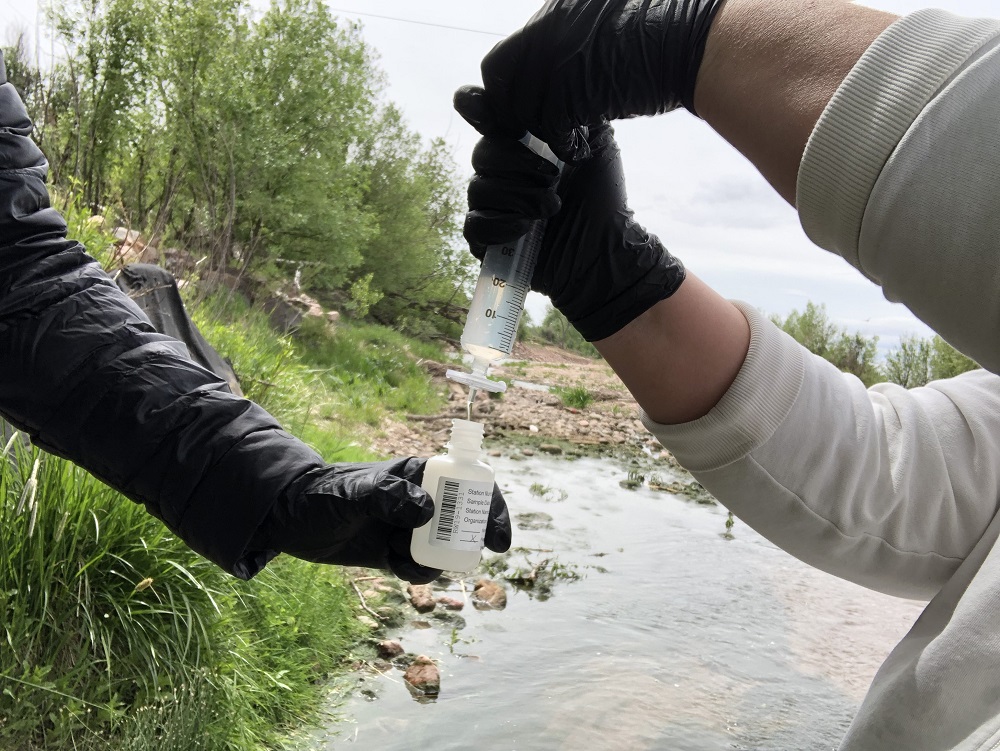
In states across the country, Clean Water Action is tackling the PFAS pollution problem. PFAS (per- and polyflyoroalkyl substances) is known as the "forever chemical" because it persists in the environment and in our bodies. It is associated with a range of health harms from cancers to liver impacts to reproductive issues. PFAS can impact communities in a variety of ways so we will be share updates from spots across the country in the coming weeks to highlight some of these local impacts. Stay tuned and let us know if you'd like to get involved locally!
On July 14th we won a huge victory when the Colorado Water Quality Control Commission (WQCC) unanimously approved a policy that provides Colorado a clear path forward to address PFAS contamination in surface and ground waters.
PFAS (per-and poly-flouroalkyl substances) are a class of human-made chemicals that are toxic even in very low concentrations. These “forever chemicals” are highly persistent and mobile in the environment, which means they bioaccumulate and travel unchanged through streams, rivers, and other water bodies, including drinking water sources. PFAS are linked to serious health problems including damage to liver, thyroid, and pancreatic function, immune system harm, hormone disruption, high cholesterol, and cancer.
Despite the serious health impacts from PFAS, there are no federal regulations to control these chemicals in surface water or drinking water, so states around the country have been adopting their own regulations and policies to protect residents.
PFAS contamination is widespread in Colorado
A major source of PFAS in our state has been through the use of fire fighting foams. Communities living near air force bases or fire stations have drinking water sources contaminated with PFAS, including in El Paso, Boulder, and Adams Counties. Residents in El Paso County living near Peterson Air Force Base have on average 2-12 times more PFOS, PFOA, and PFHxS (three types of PFAS) in their blood than the national average. The Denver metro area is also contaminated with PFAS, including at Buckley Air Force Base and at the Suncor Refinery, which discharges high levels of PFOA and PFOS into Sand Creek.
Results from a PFAS water sampling project released by Colorado Department of Public Health and the Environment (CDPHE) in June 2020 revealed that every river, stream, and reservoir sampled—including every drinking water source—had detectable levels of PFAS, some at concentrations that would exceed protective limits set by other states. Only five percent of surface water segments and half of community drinking water systems in Colorado have been tested, which means there is still a lot we don’t know about the extent of PFAS contamination in our state. Twenty percent of Colorado’s population relies on private wells, yet almost none of them have been tested for PFAS.
Commissioners sided with environmental groups and impacted communities
At the two-day policy hearing the WQCC heard comments from industry, municipalities, environmental groups, and impacted residents. Clean Water Action, along with Earthjustice, Fountain Valley Clean Water Coalition, GreenLatinos, Public Employees for Environmental Responsibility, and Sierra Club, all testified in support of the policy. Our organizations also urged Colorado to strengthen the policy by setting more stringent PFAS limits as several other states have done, instead of relying on outdated federal health advisory levels that are not fully protective of human health, especially the health of pregnant mothers and infants.
Despite hearing strong opposition from some cities, water districts, and private industries—some of which had filed a motion demanding the commission pause consideration of the policy just days before the public hearing—commissioners came down unanimously in support of the policy. In their closing statements, many commissioners remarked they had never seen so much public participation in a hearing and thanked community members from El Paso and Adams Counties for sharing their personal stories.
To address our concerns that the federal health advisory levels are not protective enough of human health, Commissioners proposed language for the policy to clarify that CDPHE “retains the authority to implement more stringent” levels “where scientifically supportable.” The commission also recommended CDPHE review levels by 2025 and continue to engage the public in its decision making.
How will Colorado’s new policy protect our water?
Under this new policy CDPHE will monitor and limit PFAS discharges in water pollution permits. CDPHE will also conduct source investigations and water sampling to identify potential areas of PFAS contamination in the state. It may also use this policy to identify rivers, streams, or lakes impaired or threatened by PFAS pollution and develop plans to clean them up. Ground and surface waters used for drinking water will be prioritized for protection and clean-up.
A key piece of this policy is source control, which involves identifying facilities dumping PFAS in Colorado waters, whether directly or by sending them to wastewater treatment plants. Source control has been an effective approach in Michigan, where there was a substantial drop in the amount of PFAS facilities discharged to wastewater treatment plants once these polluters were identified. Source control is important because we should not be shifting the burden of paying to clean-up PFAS pollution on to downstream water systems and their customers. These toxic, human made chemicals should have never been allowed to get into our drinking water sources in the first place and the industries profiting from their use should pay to clean them up.
Absent federal regulations, Colorado must set its own regulations
Though Colorado’s new PFAS policy is a significant step forward, in order to fully protect our communities, the state must do more than just use its existing regulatory authority to control these chemicals. Federal PFAS regulations for drinking water and surface water are likely years away and Colorado should not wait. In addition to watchdogging how CDPHE carries out this policy to ensure it’s doing everything it can to protect our water and communities, our organizations will continue to push the state to set its own maximum contaminant levels (MCLs) for PFAS in drinking water and to set strong numeric water quality standards for surface water and groundwater.


